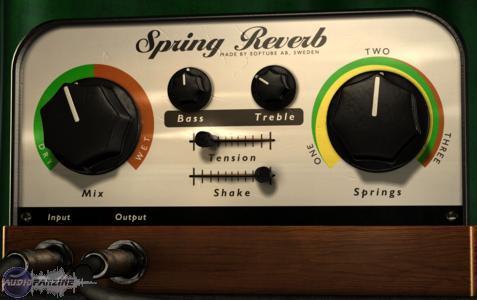

The only downside is that both open and closed hats share the same synthesis parameters, so they always have the same tonality, the only difference between them being that open sounds for longer than closed. Sound generation moves from Electronic to Acoustic (Wave Type) and Metal to Noise (Synth Type), with Pitch and Decay controls on hand for both. The HiHats instrument responds to two MIDI notes for closed and open sounds, the former choking the latter.
SOFTUBE VST REVIEW MANUAL
Again, a wide range of sounds can be produced, and the manual provides suggested settings for classic sounds. For SD Rim, Wave Type shifts smoothly between Snare and Rimshot, while Synth Type moves from Tone to Noise for SD Clap, both Wave and Synth controls move from Snare to Clap. The two snare instruments (SD Rim and SD Clap) are very flexible, with each component (Wave and Synth) including its own Type, Pitch and Decay controls, and the mix between the two set using the top slider. As a consequence, if you're used to working with the real things or other emulations thereof, the extra flexibility actually makes recreating those classic sounds a bit trickier, although the manual includes some suggested settings. Our only negative (apart from the browser) is that with Drive and DTC adjustments often resulting in dramatic volume increases, an optional auto gain compensation function would be welcome.Both give you more parameters to play with than the originals, however, with BD1's Attack Type and both instruments' Harmonics controls and tailored EQ, in particular, delivering a very broad range of sounds. Miked and electric sources are the primary targets, but electronic producers will have a ball shoving processed beats and synths through it. Each of the five distortion types has its own character and comfort zone, and DTC (see Dynamic Transient Control) puts the plugin in a league of its own when it comes to saturating and overdriving drums without compromising their attack. Softube really knows its distortion modelling onions, so it’s no surprise that Harmonics sounds palpably ‘analogue’ and generally fabulous. They prove hugely useful for taming low-frequency excesses and reining in overbearing top-end.

The Low (10-400Hz) and High Cut (200Hz-20kHz) filters can be placed pre or post distortion, and each offer three slopes - 6, 12 and 18dB/octave. Turning it increasingly emphasises high frequencies prior to distortion clockwise, and kicks up the low frequencies anticlockwise. Next to that, the Character control feels like a tilt EQ in use, but is actually rather more complex than that, with “mastering grade” filters configured specifically for each distortion type. The higher it goes, the more distortion you get. The Drive knob, of course, increases the gain of the signal into the saturation circuit. Alternatively, twisting it anticlockwise pulls the transients down even further, effectively over-compressing the signal, and making it weightier and less dynamic. The further the DTC knob is turned clockwise from centre, the more that profile is reimposed on the post-distortion output signal to increasingly dial the transients back in.

With DTC activated, Harmonics constantly analyses the dynamic profile of the input signal. While Harmonics features a Dry/Wet mix control for doing just that, Dynamic Transient Control makes for a vastly preferable option. This can pull the life out of drums and percussion in particular, often requiring mixing back in of some of the dry signal to compensate.

Distortion inevitably has a destructive effect on the transients in a signal, flattening them out as they hit the dynamic ‘ceiling’. The Dynamic Transient Control (DTC) knob sets Harmonics apart from other saturation plugins.


 0 kommentar(er)
0 kommentar(er)
